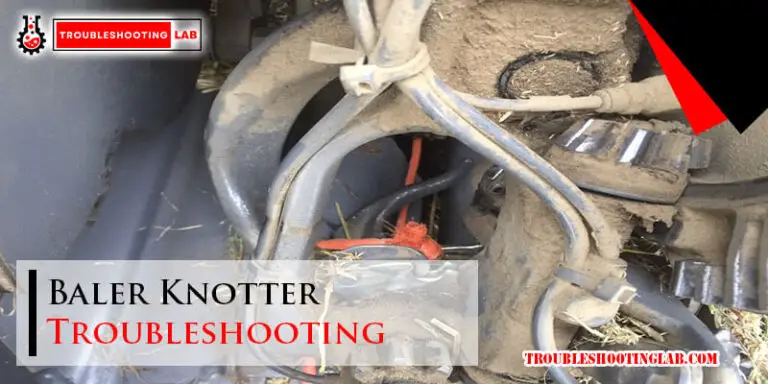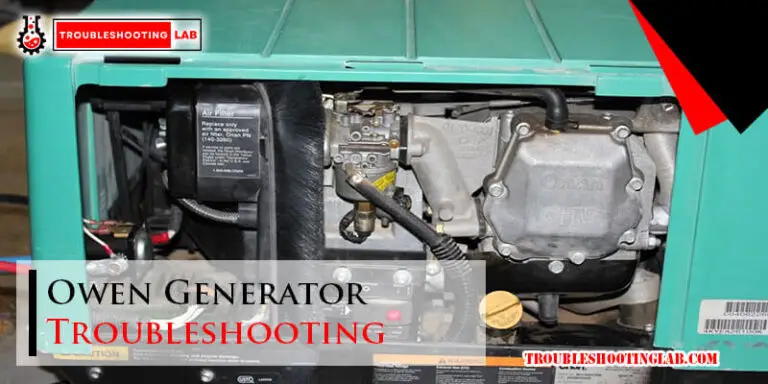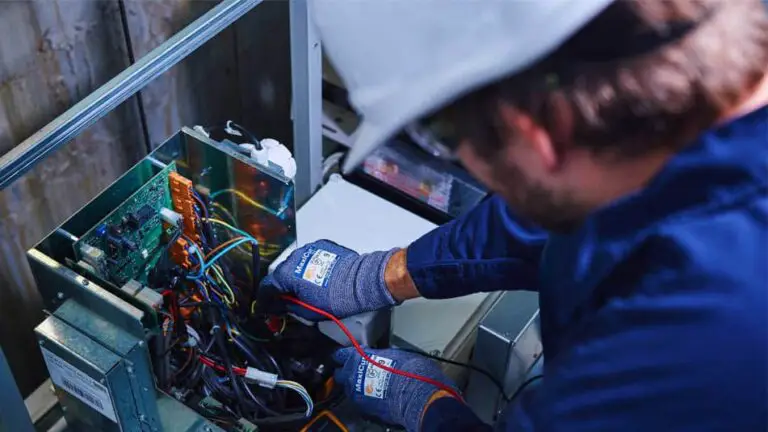Westinghouse Generator Troubleshooting: Quick Fix Guide
Is your Westinghouse generator giving you trouble? Whether it’s refusing to start, running inconsistently, or throwing error codes, dealing with a malfunctioning generator can be frustrating—especially when you need power the most.
But don’t worry; you’re not alone, and you don’t have to feel stuck. This guide will walk you through simple troubleshooting steps to get your generator back in action. By the time you’re done reading, you’ll feel more confident about diagnosing the issue and saving yourself time, money, and stress.
Ready to take control of your generator problems? Let’s dive in!

Credit: www.youtube.com
Common Issues With Westinghouse Generators
Westinghouse generators are reliable machines, but like any equipment, they can run into problems. Knowing the most common issues can save you time and frustration when troubleshooting. Let’s look at the typical problems you might face and how to address them effectively.
Generator Fails To Start
One of the most common issues is when the generator won’t start. This can happen due to a drained battery, stale fuel, or a clogged air filter. Always check that the fuel is fresh and the battery is fully charged.
Inspect the spark plug for dirt or damage, as a faulty spark plug can prevent ignition. If it’s dirty, clean it; if it’s damaged, replace it. A quick check of the oil level is also essential since many models won’t start if the oil is too low.
Ask yourself this: When was the last time you performed routine maintenance? Regular upkeep often prevents starting issues.
Low Power Output
If your generator isn’t delivering sufficient power, it could be due to an overloaded circuit. Check the wattage of the devices connected and ensure it doesn’t exceed the generator’s capacity. Reducing the load often solves this issue.
Another culprit might be dirty or damaged components, such as the air filter or fuel system. Cleaning or replacing these can restore proper performance. Also, verify that the generator is running at the correct speed—slow operation can lead to reduced power output.
Are you using the generator in extreme weather? Cold or heat can sometimes impact performance, so keep that in mind.
Unusual Noises During Operation
Loud or strange noises can be alarming, but they often point to loose components. Inspect the generator for loose bolts, screws, or other parts that might rattle during use. Tighten them as needed.
Grinding or knocking noises could indicate a more serious issue, like engine trouble or a lack of lubrication. Check the oil level and top it up if necessary. Persistent noises might require professional inspection to avoid further damage.
Have you ever ignored a strange noise, only to regret it later? Don’t make that mistake with your generator.
Overheating Problems
Overheating is a serious issue that can damage your generator. Blocked ventilation is a common cause, so ensure that the air intake and exhaust are clear of debris. Operating the generator in a well-ventilated area is also crucial to prevent overheating.
Low oil levels can cause the engine to overheat. Regularly check and maintain the oil level to keep the engine cool. Also, inspect the cooling system, if applicable, for any malfunctions or leaks.
Think about this: Is your generator getting the airflow it needs? A little attention to placement can make a big difference.
Troubleshooting these common problems doesn’t have to be overwhelming. With some basic knowledge and regular maintenance, you can keep your Westinghouse generator running smoothly for years to come.
Basic Safety Precautions
Ensuring safety while troubleshooting your Westinghouse generator is essential. Proper precautions protect you and extend the life of your equipment. Following these basic safety measures can prevent accidents and injuries.
Generators involve fuel, electricity, and emissions. Mishandling these elements can lead to hazardous situations. By adhering to the precautions listed below, you create a safer environment for maintenance and troubleshooting.
Handling Fuel Safely
Fuel is highly flammable and requires careful handling. Always store fuel in approved containers. Keep it away from heat sources, sparks, or open flames. Use a funnel when refueling to avoid spills.
Turn off the generator before adding fuel. Spilled fuel can ignite if it contacts hot surfaces. Wipe up any spills immediately using a clean cloth.
Avoiding Electrical Hazards
Generators produce electricity, which can be dangerous. Disconnect the generator from your appliances before troubleshooting. Never touch electrical components with wet hands.
Inspect cords and plugs for damage before use. Replace any damaged items to prevent shocks or fires. Use insulated tools while working with electrical parts.
Proper Ventilation
Generators emit harmful gases like carbon monoxide. Operate your generator in open areas with good airflow. Avoid running it indoors, in garages, or enclosed spaces.
Position the generator at least 20 feet away from doors and windows. Ensure the exhaust points away from living areas. Adequate ventilation prevents poisoning risks.
Step-by-step Troubleshooting
Generators can sometimes stop working due to common issues. With a Westinghouse generator, troubleshooting requires a methodical approach. This guide simplifies the process into easy steps. Follow these instructions to identify and fix the problem quickly.
Inspecting The Fuel System
Start by checking the fuel level in the tank. Ensure there’s enough fuel for the generator to operate. Old or stale fuel can also cause problems. Drain and replace it with fresh gasoline if needed. Look for any blockages in the fuel lines. A clogged line can prevent fuel from reaching the engine. Examine the fuel filter for dirt or debris. Clean or replace it if it appears dirty or worn out.
Checking The Spark Plug
Remove the spark plug and inspect it for damage or wear. A worn or dirty spark plug can stop the generator from starting. Use a clean cloth to wipe away any carbon buildup. Check the gap between the electrodes using a spark plug gauge. Adjust it to the manufacturer’s specifications if needed. If the spark plug looks damaged, replace it with a new one.
Testing The Battery
Check the generator’s battery voltage using a multimeter. A low or dead battery can prevent the generator from starting. Recharge the battery if the voltage is low. Ensure the battery connections are tight and free of corrosion. Clean the terminals with a wire brush if needed. Replace the battery if it no longer holds a charge.
Examining The Air Filter
Locate the air filter and remove it from its housing. A dirty air filter can restrict airflow to the engine. Clean the filter with soapy water if it’s reusable. Let it dry completely before reinstalling. Replace it with a new one if it’s too dirty or damaged. Ensure the air filter is seated properly to prevent dust from entering the engine.

Credit: www.reddit.com
Resetting The Generator
Resetting your Westinghouse generator can be the quickest way to resolve unexpected issues. Whether it’s a sudden power outage, an error code flashing on the control panel, or the unit refusing to start, a reset often restores normal functionality. But when should you hit that reset button, and how do you do it safely? Let’s break it down step by step.
When To Perform A Reset
A reset isn’t always the first solution, but it’s a good one when the generator behaves unpredictably. For example, if your generator stops producing power despite running smoothly, a reset can help clear any internal glitches.
Another reason to reset is after a power overload. If you’ve plugged in too many devices and tripped the system, a reset can bring it back online. But remember, resetting won’t fix mechanical or fuel-related issues. Diagnose the root cause first.
Lastly, if you’ve recently performed maintenance—such as cleaning the carburetor or replacing the spark plug—and the generator still acts up, a reset can help recalibrate it. Think of it as giving your generator a clean slate.
Steps To Reset The Generator
Resetting your Westinghouse generator is straightforward. Follow these steps carefully to avoid damaging the unit:
- Turn off the generator:Locate the power switch and turn it off. Ensure the generator is completely powered down before proceeding.
- Disconnect all devices:Unplug any appliances or tools connected to the generator. This prevents potential surges during the reset.
- Allow it to cool down:If the generator has been running, give it a few minutes to cool. Resetting a hot generator can lead to further complications.
- Press the reset button:Find the reset button, typically located near the control panel. Press and hold it for 3-5 seconds. If your generator doesn’t have a dedicated reset button, consult the user manual for alternative steps.
- Restart the generator:Turn the power switch back on and start the generator. Check if it’s functioning as expected.
Still facing issues? Double-check the connections and fuel supply. Sometimes, what seems like a major problem can be as simple as a loose cable or an empty gas tank.
Have you ever struggled with a generator that just wouldn’t cooperate? Try these steps next time and see the difference. A simple reset may save you hours of frustration.
Maintenance Tips For Long-term Use
Keeping your Westinghouse generator in top shape is essential for reliable performance during power outages or outdoor adventures. Proper maintenance ensures it runs smoothly, lasts longer, and saves you from unexpected breakdowns. Let’s dive into practical tips to make your generator a dependable companion.
Regular Oil Changes
Think of oil as the lifeblood of your generator. Over time, it gets dirty and less effective at lubricating the engine. Regular oil changes prevent wear and tear, keeping the engine healthy and efficient.
Check the owner’s manual for recommended intervals—typically after 50-100 hours of use. Use high-quality oil for best results. Don’t skip this step; neglecting oil changes can lead to costly repairs down the road.
Ever changed oil in your car? It’s similar but simpler. Drain the old oil, replace the oil filter if needed, and add fresh oil. Make sure the generator is on a level surface to avoid overfilling.
Cleaning The Components
Dust, dirt, and debris are silent killers of your generator. They clog air filters, harm internal parts, and reduce efficiency. Cleaning the components regularly keeps the machine running like new.
Start with the air filter—it’s easy to overlook but critical for smooth operation. Remove it, gently clean or replace it if it’s too dirty. This ensures proper airflow and prevents overheating.
Don’t forget the exterior. Wipe down the generator housing and inspect for signs of rust or damage. A clean machine isn’t just pretty; it’s less likely to develop issues over time.
Storing The Generator Properly
How you store your generator is just as important as how you use it. Leaving it exposed to moisture, dust, or extreme temperatures can shorten its lifespan. Proper storage is key to long-term reliability.
Store it in a dry, cool place, ideally covered with a weather-resistant tarp. This protects it from dust and keeps moisture out. If you’re storing it for months, drain the fuel to prevent clogging in the carburetor.
Planning ahead saves headaches. Add fuel stabilizer to prevent fuel degradation. This small step ensures your generator is ready to go whenever you need it.
Are you taking care of your generator like it deserves? A little effort now can save you from big problems later. Regular oil changes, cleaning, and proper storage are simple habits that make a huge difference in performance and durability.
When To Seek Professional Help
Generators are incredibly handy, especially during power outages, but troubleshooting them can sometimes get tricky. While some issues can be fixed with basic know-how, others require expertise. Knowing when to call a professional can save you time, money, and further damage to your generator.
Complex Electrical Issues
Electrical problems can be dangerous if handled incorrectly. If you notice inconsistent power output, frequent tripping of breakers, or sparks, it’s time to step back. These issues might indicate wiring faults, control board malfunctions, or grounding problems that need a trained technician.
Attempting to fix electrical issues without the right tools or knowledge can make things worse—or even cause injuries. A professional will have the expertise to diagnose and repair the problem safely. Don’t risk turning a small electrical glitch into a costly repair.
Persistent Mechanical Failures
Have you already tried cleaning filters, replacing spark plugs, or adding fresh fuel but your generator still won’t run smoothly? Persistent mechanical failures like engine misfires, unusual noises, or the generator shutting off unexpectedly can signal deeper issues. These could be related to the carburetor, fuel system, or internal engine components.
Ignoring these problems can lead to more severe damage over time. Professionals have the tools to disassemble and inspect parts that most of us wouldn’t dare touch. They can identify and repair what’s causing the breakdown, ensuring your generator runs like new again.
Warranty And Support Options
Did you know that attempting to fix certain issues yourself might void your warranty? Many Westinghouse generators come with warranty coverage, but it often requires that repairs be handled by an authorized technician. Always check your warranty terms before opening up your generator.
Additionally, Westinghouse provides customer support that can guide you on whether the issue qualifies for warranty repair. They might even recommend a nearby service center. Utilizing these resources can save you from unnecessary expenses and ensure your generator remains covered.
So, what’s your next step? Assess the issue carefully. If it feels beyond your skill level, don’t hesitate to seek professional help. After all, peace of mind and a reliable generator are worth the investment.

Credit: www.facebook.com
Conclusion
Troubleshooting a Westinghouse generator doesn’t have to feel overwhelming. Start with simple checks like fuel and oil levels. Inspect connections and switches for visible issues. Regular maintenance can prevent many common problems. Always refer to the user manual for guidance.
If issues persist, contacting a professional may be necessary. Taking small, careful steps ensures your generator runs smoothly. Keep safety in mind during any troubleshooting process. A well-maintained generator provides reliable power when you need it most.






